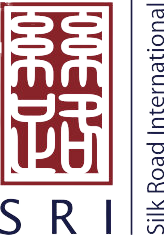Financial news, some commentary and context and a crazy theory, just for fun
First some news with context.1. Power consumption is down. This is really a bit troubling. As the weather heats up there is not additional monies being spent on AC, and, as the govt claims, factories are starting to buy more raw materials but there is less, not more, power-consuming activity.This also means that factories are going to have materials on hand, low demand and extra time to do projects. These can be good things for you--especially if you're coming in to China now with cash.2. Trends are up, but April is down. This is certainly my feelings--I believe that we are definitely trending up, but more slowly and without a quite as much swagger as we hear from official quarters. The context of this trend (see below) is that most of the growth before April was in infrastructure (i.e. government expenditures, not private sector growth). And, like we're seeing in the US, tens of thousands of new government jobs and hundreds of thousands of private sector lay offs do not make for a strong sustained recovery. In fact, just the opposite is true--once the govt monies dry up who fills the void?3. Fix-asset investment is up. Again, if we can strip away some of the earthquake and pre-stimulus government spending, I doubt the numbers would be as rosy. That means that while this news is good, there isn't a lot more spending outside of the govt sponsored projects. China is, for sure, doing a much better job of injecting cash into the economy and helping people with actual economic issues (as opposed to the US where if you don't like the current version of "hope" you're just SOL). But government cash keeps things going in the short term, it's not a fix for a still largely export-driven and weak consumer economy.4. Factory output less than expected. Taken alone this would be bad news. But because the economy so dependent on exports but overall numbers show it's not falling further behind, the bigger picture appears to be that China is stabilizing and the trend will hopefully continue. But two more weak export quarters, inflation and the end of stimulus cash (loans are already drying up) could mean more trouble than the "recovery" can take.5. Problem is, it's still not a consumer economy.This is one of my fascinations here in China. There seems to be a ton of money in the East Coast cities and in the second tier cities. But I believe that it's deceptive. Yes, there is a lot of money here but there are so many people in such small places that there seems to be more than there really is. This is my theory (and what it is, and it's mine, too): First, take 200 million Americans and estimate that the median household income is, say $35K a year. And then take 200 million Chinese with an average income of, say $12K a year (I know, it's not that high, this is just an example). Now I believe that even with the income disparity, the 300 million Chinese are going to look a lot richer than the 300 million Americans. Why? Because the vast majority of the 200 million Chinese are condensed into about 30 cities and there are two of these incomes for most households--you've got more people with some money in a smaller location. It would be like if all of the cities in the US looked like Beverly Hills. The 200 million Americans are spread out over the entire country, in small towns and suburbs, not high rises surrounded by shopping malls. There are less than 10 metro areas in the US with more than 5 million people and none over 10 million. There are 5 metro areas with over 10 million people in China and 8 over 5 million. The issue of very conspicuous consumption can also be argued makes China look richer than it really is.Maybe you don't agree with my theory, but the Chinese economy is not a consumer economy regardless. And that's not good news for an export dependant economy that is trying to recover.
